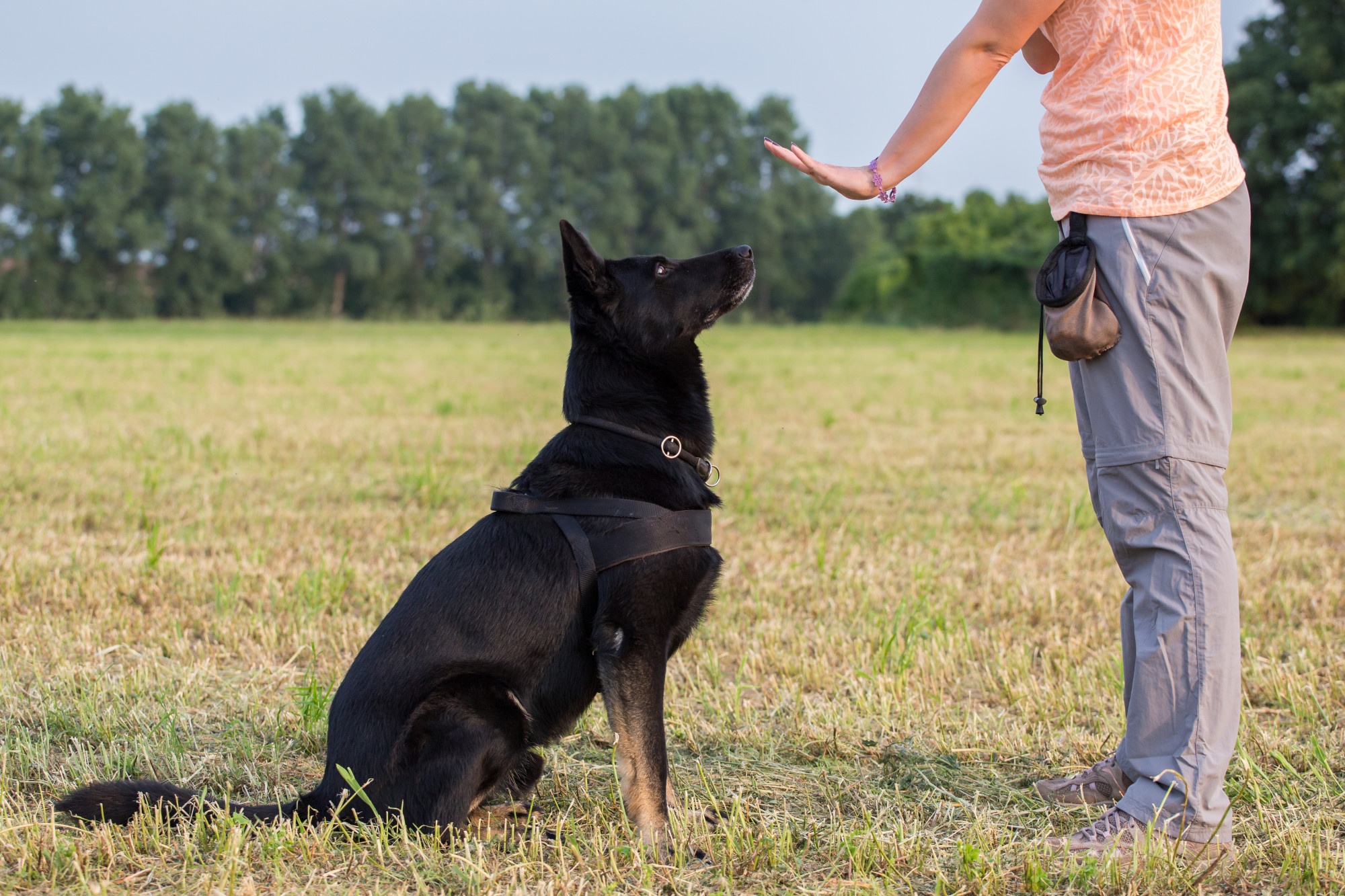For dog owners, their dogs are their most loyal companions, so naturally, we want to know as much as we can about them.

To that end, we’ve compiled a list of 15 fun and interesting facts about dogs that might surprise you.
From why dog’s noses are wet to what dog breed can beat a cheetah in a race, get ready for some amazing dog facts.
Fun Dog Facts
1. Dogs Noses Are Wet to Help Them Absorb Chemicals
Have you ever wondered why dogs’ noses are almost always wet? It’s because this helps them absorb scent chemicals. Dogs’ noses secrete a special mucus that helps absorb these chemicals, at which point dogs lick their noses to sample them, helping them understand the smell.
2. Newfoundlands Are Amazing Lifeguards
Newfoundland dogs are the ultimate doggy lifeguards because they have water-resistant coats and webbed feet. They can also swim for unusually long distances, even while pulling a would-be drowning victim to safety.
This makes sense because Newfoundlands were once bred as working dogs for fishermen and were relied upon to rescue people from drowning. As a result, today many Newfoundland owners have had their dog try to “rescue” them while they’re simply going for a swim in a pool or lake.
Newfoundlands are hardly the only dogs who enjoy being in and around water. Other water dogs include the Labrador Retriever, the Standard Poodle, the English Setter, and the rare but beloved American Water Spaniel.
3. Dogs Can See Some Colors
Many people believe dogs are colorblind but that’s not true. Although the vast spectrum of colors that human beings enjoy goes well beyond what a dog can see, they do see certain colors.
In the case of dogs, their retinas only contain the types of cones in their retinas responsible for seeing the colors blue and yellow. Don’t feel too bad for your dog, however.
Although the range of colors they can see is limited, dogs have an advantage over people when it comes to how many rods they have in their retinas. This means they are far more adept than we are at seeing in dark conditions.
4. Dogs Are Either Right or Left Pawed
This one might surprise you. According to a recent study, dogs can be right or left-pawed, just like humans. This study tested 17,901 dogs by giving them a food retrieval task consisting of a treat or piece of dog food placed in a tube. The dog would then be observed as they reached in with their paw to pull it out.
This study reported 74 percent of dogs showed a clear preference for using one paw over the other, and the remaining 26 percent seemed to use both paws equally. Further, among the dogs who seemed to have a preference, 58.3 percent of dogs were right-handed, while 41.7 percent were left-handed.
When it comes to people, approximately 90 percent are right-handed, with 10 percent being left-handed and a minuscule 1 percent being ambidextrous.
5. A Bloodhound’s Sense of Smell Can Be Used As Evidence In Court
How’s this for some interesting dog breed information? A trained Bloodhound’s sense of smell is so spot on that it can be admitted as evidence in a court of law. Perhaps it’s because Bloodhounds can follow tracks over 300 hours old and can stay on a scent trail for over 130 miles.
6. Dogs Have A Unique Way Of Sweating
Dogs regulate their body heat by panting. On a hot day or after an invigorating game of fetch, panting and maybe laying in a shaded area helps your dog take a minute to cool off.
Dogs also sweat, just not in the way humans do. While you’ll never need to help your dog mop the sweat off their brow, dogs do sweat through their paws.
You read that right; dogs have merocrine and apocrine glands. Merocrine glands found within dogs’ paw pads are responsible for activating sweat to help your dog stay cool on hot days or during physical exertion. While technically considered sweat glands, apocrine glands release pheromones and give each dog their unique scent to allow other dogs to identify them.
7. Basenji Dogs Don’t Bark, They Yodel
If you thought all dogs barked, you might be surprised to learn otherwise. Basenjis don’t bark but instead are known to yodel, whine and even occasionally let out a scream as a means of communicating. Their barkless traits have earned them a nickname: “The African Barkless Dog.”
8. A Greyhound Could Beat a Cheetah in a Long-Distance Race
You knew Greyhounds were lightning-fast, but did you know a Greyhound could beat a cheetah in a race? According to Psychology Today, Greyhounds are excellent long-distance runners who can keep up a speed of 35 miles per hour for up to 7 miles.
Cheetahs, meanwhile, are incredibly fast but can only keep their speed up for around 200 to 300 yards. Even if they got a running start, the cheetah would soon be surpassed by a Greyhound.
9. Dogs Have a Powerful Sense of Smell
We’ve already covered Bloodhounds and their incredible sense of smell, but even your average dog can pick up on scents that humans can’t. Studies have shown dogs have around 300 million olfactory receptors in their noses, while humans have only about 6 million.
As if that’s not impressive enough, dogs also have a secondary system located in the brain for picking up scents known as the Accessory Olfactory System. This system picks up on pheromones, which are chemicals produced by animals to affect and influence the behavior of other animals.
10. A Dog’s Nose Print is Unique
Here’s a weird fact—each dog’s nose print is unique to only them, just the way fingerprints are unique to people.
11. 30% of Dalmatians Are Deaf in One Ear
The Universities Federation for Animal Welfare (UFAW) states that, on average, around 30 percent of Dalmatians are deaf in one ear and 5 percent are deaf in both.
This is due to something called the extreme piebald gene, which is responsible for their white coat and blue eyes (in some of them). Dalmatians with larger dark patches are less likely to be deaf.
12. Why Dogs Kick Backward After “Doing Their Business”
Does your dog kick backward after relieving themselves? Many people assume this is their dog’s way of covering their feces with grass, dirt, sand, gravel or whatever else they happen to be standing on.
This is not the case; dogs do this to mark their territory. Remember earlier we mentioned dogs have apocrine glands in their paw pads that release pheromones? This is one way they use them.
While dogs often urinate to mark their territory, “scrape behavior,” which is the backward kicking they do after the fact, is an even longer-lasting way to leave their scent behind. Think of it as your dog’s way of writing “I was here” and then adding an exclamation point.
13. Chow Chows & Shar-Peis Have Black Tongues
The Chow Chow and the Shar-Pei are the only two dog breeds with fully black tongues. Even more interesting, we don’t know why this trait was bred into these dogs.
14. Dogs Have Three Eyelids
Many dog owners are unaware of this interesting canine factoid, but did you know your four-legged friend has three eyelids? Take a close look.
They have their upper and lower eyelids, but they also have a third eyelid underneath those known as the nictitating membrane. This membrane serves multiple functions, including clearing the cornea of any particles or debris, tear production and acts as a lymph node to battle any potential infections.
15. Dogs Engage in Selfless Acts of Kindness
Last, but certainly not least, is this fun dog fact you probably already suspected. According to studies, dogs are one of the few animals who will do things for others, even if they know they won’t personally benefit from it. No wonder humans and dogs have such an amazing bond.
We hope you’ve enjoyed these cool facts about dogs. For more information on dogs and puppies, hear from our pet experts on our Pet Expertise page.

